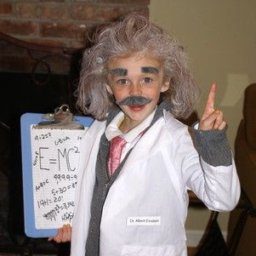It used to be that when you’d make a comic book, the characters on the page were the superheroes. For years, kids and adults alike to satiated their appetite for the fantastical worshiped at the altar of super strength and the ability to fly. But now with the advent of the internet and the various comic-cons throughout the world, fans have access to some of the legends who actually create the stories they so eagerly anticipate. From the writers who come up with all the crazy ideas to the artists who painstakingly bring every comic to vivid life, these are the real superheroes, and their super abilities can reach far beyond anything we can imagine.
But, I digress. You see, comic books are something that I’ve always been interested in, but never had either the patience or the talent to create one of my own. It doesn’t help that I can’t draw a hill of beans (my nine-year-old is a better artist at this point) nor could I even draw a stick figure accurately, if I tried. Well, maybe I can do that, but it’s a sickly-looking stick figure. In any case, the magicians who do the actual drawing for comic books really are legends and we’re going to briefly explore that there is more to this art than meets the eye.
The process of creating a comic book is a lengthy process and something that requires near constant devotion. To hear one comic book artist say it, “being a comic book artist is like sentencing yourself to life imprisonment at hard labor in solitary confinement.” For others, even though the hours were long and the attention to detail painstaking, they found great joy in the process. They saw it as a way to inspire millions and what artist doesn’t want their work to have broad reaching impact?
But there is a larger issue at play here with comic book art. Like basically everything, technology has made creating comic books both harder and easier. Before the advent of desktop publishing, most comic books were penciled in by hand and then colored by hand as well using everything from the finest paints to Crayola markers. What was more important that the type of coloring being used was the style that the artist wanted to capture. For example, comic books that achieve that painterly style have always been in vogue—after all, comics were often painted by hand before they were pressed and published. Still others used markers or even crayons as a way to capture either a more polished style or a sense of whimsy. Truly, whatever feeling the artist wanted to convey was the decision point for what kind of tool they would use.
Comic Art in Action
Now, however, a lot of commercial comic coloring is done by computer. It’s still done by a human operating a computer, but coloring is often more flexible and easier to create using programs like Illustrator and Photoshop. For example, this is one comic book artist who, after penciling in the comic by hand, uses Photoshop to fill in the color and bring the picture to life.
https://www.youtube.com/watch?v=Eir4aKfb2cc
Still others prefer the old method. In fact, you can find numerous illustrators who still do things with nothing but paint and a brush, like this group:
And there are others who have taken to speed drawing, trying to color a picture in the shortest amount of time possible.
Regardless of how you slice it, there is one thing that all of these artists have in common—they are trying to achieve a particular look and feel from their art, trying to evoke some kind of emotion that ties in to the story. And, from what they all say, drawing and coloring for the sake of looking pretty does a disservice to the comic, the writing and the penciling of the other artists.
But that brings us to the other part of comic book art—that of the art of writing.
Comic book writers are as equally revered in comic circles because it is their vision that creates the stories that comic book aficionados love, myself included. Stories of far off places, daring do and humans with enhanced abilities are all the kind of fodder that helps many of us to escape the pressures and stresses of modern life. But, for the writers themselves, their journey can be much more intense even, than their comic book heroes.
All told, comic book creation, both writing, penciling and coloring is an art unto itself. But like with all good art, the science and technology behind the creation are changing even our most fantastical worlds into something truly miraculous.





